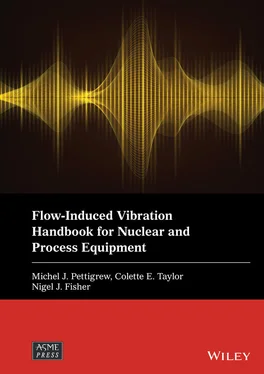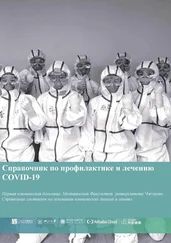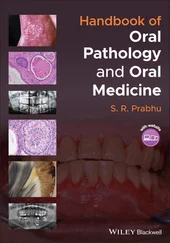.. Fig. 2-3 Flow Velocity Vectors in the Central Plane of a Typical Steam Gener... Fig. 2-4 Gap Cross‐Flow Distribution Along a Typical Condenser Tube. Fig. 2-5 Flow Pattern Map for Two‐Phase Flow Across Cylinder Arrays Using Fl... Fig. 2-6 Hydrodynamic Mass in Two‐Phase Cross Flow: Comparison Between Theor... Fig. 2-7 Viscous Damping Data for a Cylinder in Unconfined and Confined Liqu... Fig. 2-8 Damping Data for Multi‐Span Heat Exchanger Tubes in Water. Fig. 2-9 Comparison Between Tube Support Damping Model (Squeeze‐Film and Fri... Fig. 2-10 Comparison Between Proposed Design Guideline and Available Damping... Fig. 2-11 Summary of Fluidelastic Instability Data for Single‐Phase Cross Fl... Fig. 2-12 Fluidelastic Instability Data in Two‐Phase Cross Flow. Fig. 2-13 Effect of P/D on Fluidelastic Instability Constant in Two‐Phase Cr... Fig. 2-14 Proposed Guideline for Single‐Phase Random Excitation Forces (Refe... Fig. 2-15 Proposed Guideline for Two‐Phase Random Excitation Forces In Churn... Fig. 2-16 Strouhal Numbers for Tube Bundles in Liquid Cross Flow: a) Normal ... Fig. 2-17 Fluctuating Force Coefficients for Tube Bundles in Single‐Phase Cr... Fig. 2-18 Fluctuating Force Coefficients for Tube Bundles in Two‐Phase Cross... Fig. 2-19 Proposed Damping Criteria (Resonance Parameter) for: a) In‐Line (S... Fig. 2-20 Flow Velocities, Support Locations and Tube Geometry for a Typical... Fig. 2-21 Example of Heat Exchanger Tube Vibration Analysis: Input of Vibrat... Fig. 2-22 Heat Exchanger Tube Vibration: Typical Free Vibration Analysis Res... Fig. 2-23 Vibration Mode Shapes and Vibration Analysis Results for a Typical...
3 Chapter 3 Fig. 3-1 Pressurised Water Reactor Vessel and Internals (Axisa, 1993). Fig. 3-2 Light-Water Boiling Reactor Pressure Vessel and Internals (Shumway,... Fig. 3-3a CANDU Heavy Water Reactor (Enhanced CANDU 6 Technical Summary, 200... Fig. 3-3b Schematic Diagram of CANDU Nuclear Power Station (Enhanced CANDU 6... Fig. 3-4 Schematic Diagram of Recirculating Steam Generator (Sauvé et al, 19... Fig. 3-5 Example 3-1 - Process Heat Exchanger Schematic. Fig. 3-6 Example 3-2 - U-Bend Schematic. Fig. 3-7 An Example of Power Spectral Density Curves of Turbulent Pressures ... Fig. 3-8 Flow Patterns in Vertical Channels. Fig. 3-9 Flow Pattern Map for Vertical Flow in Tubes with 1 to 3 cm Diameter... Fig. 3-10 Boundary-Layer and Wake Changes in the Flow Past a Cylinder as the... Fig. 3-11 Two-Phase Flow Patterns in Vertically Upwards and Horizontal Cross... Fig. 3-12 Flow Pattern Map for Two-Phase Flow Across Cylinder Arrays Using F... Fig. 3-13 Flow Regime Map for Vertical Two-Phase Flow Using McQuillan and Wh... Fig. 3-14 Ulbrich and Mewes Flow Regime Map (Solid Line) for Vertically Upwa... Fig. 3-15 Flow Patterns in Vertical Two-Phase Cross Flow from Kanizawa and R... Fig. 3-16 Flow Regime Map Comparison Between Vertically Upward Air-Water Flo... Fig. 3-17 Sketch of Axial-Flow Heated-Cylinder Test Section (Pettigrew and G... Fig. 3-18 Effect of Nucleate Boiling on Cylinder Vibration (Pettigrew and Go... Fig. 3-19 Cross-Flow Tube Bundle Test Section with Heated Tubes (M and T) in... Fig. 3-20 Example 3-3 - Cross-Section of Heat Exchanger Showing Flow Paths 1...Fig. 3-21 Predicted Velocity Vectors (Left), Steam Quality (Second from the ...Fig. 3-22 Vector Fluid Velocity for a Maximum-Radius Tube Shown by Thick-Lin...Fig. 3-23 Gap Cross-Flow Velocity for the Maximum-Radius Tube.Fig. 3-24 Predicted (a) Velocity and (b) Air Concentration Distributions in ...Fig. 3-25 Process Heat Exchanger Predictions of Velocity Distribution for (a...Fig. 3-26 CFD Predictions of Path Lines in a Shell-and-Tube Heat Exchanger w...
4 Chapter 4Fig. 4-1 Effect of Void Fraction and Mass Flux on Hydrodynamic Mass Ratio (P...Fig. 4-2 Effect of P/D and Bundle Geometry on Hydrodynamic Mass Ratio (Petti...Fig. 4-3 Effect of Slip Ratio and Fluid Mixture on Hydrodynamic Mass Ratio C...Fig. 4-4 Straight Tube with Simple Support at Each End.Fig. 4-5 Two‐Span Beam with Outer Ends Clamped.Fig. 4-6 Multi‐Span Beam with Outer Ends Clamped.Fig. 4-7 View of Typical Steam Generator U‐Tube with Support Points Located ...Fig. 4-8 Nomenclature Utilized in Representing Lateral and Rotational Displa...Fig. 4-9 View of Half of Steam Generator U‐Tube, Referred to as a Half‐Tube,...Fig. 4-10 Schematic Representation of Boundary and Continuity Conditions to ...Fig. 4-11 Schematic Representation of Boundary and Continuity Conditions to ...Fig. 4-12 Schematic Representation of First and Second Free Vibration In‐Pla...Fig. 4-13 Schematic Representation of First and Second Free Vibration Out‐of...Fig. 4-14 Schematic Representation of Boundary and Continuity Conditions to ...Fig. 4-15 Schematic Representation of Boundary and Continuity Conditions to ...Fig. 4-16 Schematic Representation of Boundary and Continuity Conditions to ...Fig. 4-17 Schematic Representation of Boundary and Continuity Conditions to ...
5 Chapter 5Fig. 5-1 Types of Tube Motion at Support Location.Fig. 5-2 Types of Dynamic Interaction between Tube and Tube Support.Fig. 5-3 Damping of Heat Exchanger Tubes in Air.Fig. 5-4 Effect of Tube Support Thickness on Damping in Gases (Air).Fig. 5-5 Effect of Tube Support Thickness on Normalized Damping Ratio in Gas...Fig. 5-6 Effect of Support Thickness on a) Sliding Interaction, and b) Impac...Fig. 5-7 Effect of Dimensionless Support Thickness ( L / ℓ m) on Normali...Fig. 5-8 Design Recommendation for Damping in Gases.Fig. 5-9 Damping Data for Multi‐Span Heat Exchanger Tubes in Water.Fig. 5-10 Viscous Damping Data for a Cylinder in Confined (Chen et al, 1976)...Fig. 5-11 Viscous Damping of Cylinders in Liquids Versus Stokes Number.Fig. 5-12 Damping Due to Tube Supports in Multi‐Span Heat Exchanger Tubes.Fig. 5-13 Heat Exchanger Tube with N Spans and ( N ‐1) Intermediate Supports....Fig. 5-14 Linearization of Three‐Dimensional Factor K.Fig. 5-15 Damping and Hydrodynamic Mass Functions, Im(h) and Re(h), (Mulcahy...Fig. 5-16 Squeeze‐Film Damping of a Multi‐Span Heat Exchanger Tube in Water....Fig. 5-17 Effect of Support Thickness Parameter L / ℓ mon Damping due to...Fig. 5-18 Comparison between Tube Support Damping Parameter and Experimental...Fig. 5-19 Type of Contact Between Tube and Support.Fig. 5-20 Comparison between Tube Support Damping Model (Squeeze‐Film and Fr...
6 Chapter 6Fig. 6-1 Flow Regime Map for Tube Bundles in Vertical Cross Flow: Symbols Sh...Fig. 6-2 Damping of a Cylinder in Confined Air‐Water Axial Flow; Mass Flux: ...Fig. 6-3 Effect of Mass Flux on Two‐Phase Damping Ratio in Annular Flow (Car...Fig. 6-4 Effect of Mass Flux on Tube Damping in Two‐Phase Cross Flow (Pettig...Fig. 6-5 Effect of Mass Flux on Damping in Lift and Drag Directions for a No...Fig. 6-6 Damping of Tube Bundles of P/D = 1.47 in Two‐Phase Cross Flow Showi...Fig. 6-7 Damping of Tube Bundles in Two‐Phase Cross Flow: Comparison of Air‐...Fig. 6-8 Damping of a Rotated‐Triangular Tube Bundle in Freon‐22 Two‐Phase C...Fig. 6-9 Effect of Void Fraction on Two‐Phase Damping in Cross Flow: Propose...Fig. 6-10 Damping of Tube Rows in Air-Water Cross Flows; ▴ Taylor et al (198...Fig. 6-11 Total Damping for Tube Bundles of P/D = 1.22 in Air‐Water Cross Fl...Fig. 6-12 Damping Behavior: Comparison Between All Flexible Tube Bundle and ...Fig. 6-13 Effect of Surface Tension on Two‐Phase Damping for Tube Frequencie...Fig. 6-14 Damping of Rotated Triangular Tube Bundles: Comparison Between Air...Fig. 6-15 Comparison Between Proposed Design Guideline and Available Damping...
7 Chapter 7Fig. 7-1 Typical Vibration Response versus Flow Velocity Relationship for Tu...Fig. 7-2 Vibration Response of a Normal‐Triangular Tube Bundle of P/D = 1.33...Fig. 7-3 Fluidelastic Instability Data and Design Recommendations for Variou...Fig. 7-4 Fluidelastic Instability Diagrams: a) Normal Square, b) Rotated Squ...Fig. 7-5 Principal Tube Bundle Configurations.Fig. 7-6 Well-Defined Fluidelastic ThresholdFig. 7-7 Less Well-Defined Fluidelastic ThresholdFig. 7-8 Vibration Response of One Flexible Tube versus Seven Flexible Tubes...Fig. 7-9 Outline of Fluidelastic Instability Data for All‐Flexible Tube Bund...Fig. 7-10 Fluidelastic Instability of a Single Flexible Tube in Rigid Arrays...Fig. 7-11 Fluidelastic Instability of a Single Flexible Tube in a Normal‐Squ...Fig. 7-12 Comparison of Fluidelastic Instability Results with Only Structura...Fig. 7-13 Fluidelastic Instability Data for Flexible Tube Bundles: Compariso...Fig. 7-14 Effect of Pitch‐to‐Diameter Ratio on Fluidelastic Instability Cons...Fig. 7-15 Fluidelastic Instability Data Presented in Terms of Modified Mass‐...Fig. 7-16 Fluidelastic Instability Data for Different Tube Bundle Configurat...Fig. 7-17 Summary of Fluidelastic Instability Data for All‐Flexible Tube Bun...Fig. 7-18 Fluidelastic Instability Analysis of Real Heat Exchangers: Compari...Fig. 7-19 Multi‐Span Heat Exchanger Tube Schematic with Cross‐Flow Pattern....Fig. 7-20 Wind‐Tunnel, Rotated‐Triangular Test Array.Fig. 7-21 Response Spectra Variation with Flow Velocity for Tube 2 in a Full...Fig. 7-22 Vibration Response for the Flexible Bundle within Wind Tunnel: ♦, ...Fig. 7-23 Response Frequency versus Flow Velocity for the Flexible Bundle wi...Fig. 7-24 Clamped‐Free Cylinder Experiencing 4 th‐Mode Buckling In Confined L...Fig. 7-25 Selected Frequency Spectra for Fluidelastic Instability of Clamped...
Читать дальше












